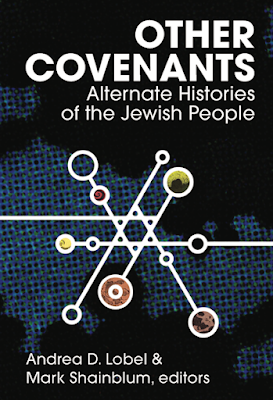Can Counterfactuals Help Explain the Relationship Between American and Nazi Racism? On James Whitman's "Hitler's American Model"
James Q. Whitman’s new book,
Hitler’s American Model, raises
important issues that are worth exploring about the influence of American
racism on the policies of the Nazi regime. One way of testing the causal relationship is to borrow from
Max Weber’s time honored method of altering a variable in a causal relationship
and seeing how a changed antecedent would affect the consequent.
One critic, Joshua
Muravchik has already done so in a perceptive, if imperfect, review
in Moment Magazine. In challenging Whitman’s claim that
segregationist American laws pertaining to Blacks and whites in the U. S.
influenced Nazi legal minds drafting the Nuremberg Laws in 1935 (not 1934, as
Muravchik mistakenly writes), he declares:
"Suppose
for a moment that the Nazis had found no “inspiration” in American examples.
What then? The German lawyers had a mandate, flowing from the Führer, to draft
laws that would strip Jews of their citizenship and prevent them from further
contaminating German blood through sexual contact. Had there been no American “models”
to guide them, would the lawyers have reported back to their superiors that,
however desirable it might be to protect the Aryan race from the Jews, they
could recommend no measures because they could find no foreign precedents?
Would there have been no Nuremberg laws? Would the Führer have backed down and
away?"
The suggestion, of course, is that Nazi policy would have unfolded exactly as it did in reality.
Similarly, in The Journal of Genocide Research (2013), Thomas Kühne critiqued the claim of Carroll Kakel’s book, The American West and the Nazi East, that the story of 19th century American colonial activity in North America (ie. western expansion) inspired Hitler’s quest for Lebensraum in World War II.
Similarly, in The Journal of Genocide Research (2013), Thomas Kühne critiqued the claim of Carroll Kakel’s book, The American West and the Nazi East, that the story of 19th century American colonial activity in North America (ie. western expansion) inspired Hitler’s quest for Lebensraum in World War II.
As Kühne put it:
“Apart
from few Hitler quotations, Kakel relies on a likewise scanty body of secondary
sources on the reception and the images of America in Nazi Germany and by the
Nazi movement. The far-reaching,
implicit consequence of his comparison—if there had been no American West, the
German East and possibly the Holocaust would not have materialized, or if so,
only in a different way—is thus based on astonishingly thin evidence.
Hence, Jens-Uwe Guettel, author of rather differently conceptualized book on
transnational exchanges between German and American imperialism and
expansionism, is able to quickly deflate the foundation of Kakel’s thesis: in
Hitler’s first 800-page book, North America is mentioned three times, each ‘brief,
superficial and metaphorical’. America is invoked a little more often in Hitler’s
second book (unpublished during his lifetime), but not with reference to German
expansion in the East.”
My point in drawing
attention to these counterfactual critiques is not to question to value of
comparing American and Nazi racism. Such a comparison can be highly instructive. Rather, I seek to show
how establishing causal influence can be aided by counterfactual analysis.
Muravchik's and Kühne’s
observations suggest that, even without the American precedents, Nazi policy
would have probably proceeded as it did in semi-deterministic fashion. Their observations suggest that any
Nazi references to American precedents served less as sources of inspiration
than rhetorical justification.



Comments